Growing radishes is one of the easiest ways to boost your garden yields in a very short amount of time.
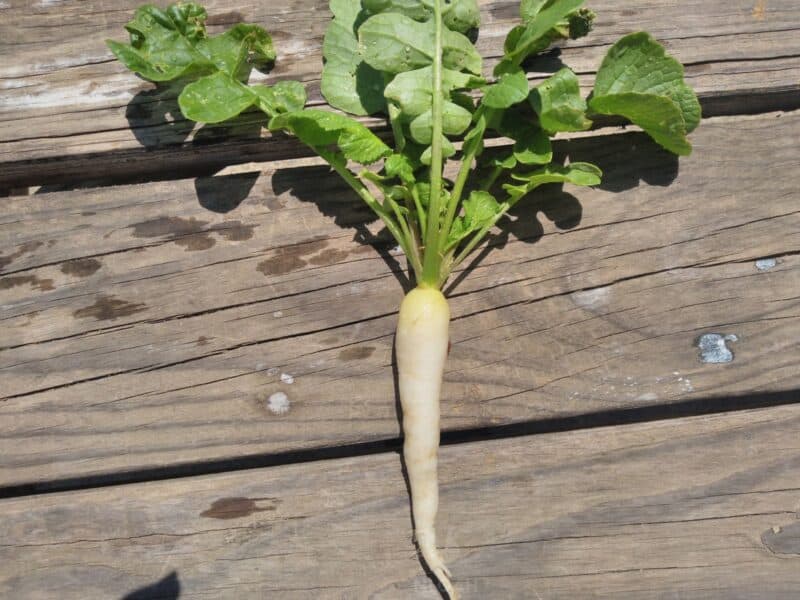
While there are plenty of radish varieties to choose from, sometimes picking more unique varieties than a traditional Cherry Belle radish keeps gardening from getting stale and even gets your family excited for something they don’t typically see at the grocery store.
Growing radishes is usually pretty simple, but having a go-to guide to grow White Icicle radishes can be helpful! I sure didn’t have the perfect experience growing them for the first time, so this should help you out a bit!
Table of Contents:
What Are White Icicle Radishes?
The White Icicle radish variety goes by many other names:
- Lady Fingers
- White Naples
- White Italian
- Long White
- White Transparent
They are a mild-flavored radish variety in the brassica family of crops. This heirloom variety has been cultivated since the 1800s and is known to do well in the cold and warm seasons, making it the perfect addition whenever you have extra space in the garden.
For example, I used the space between the carrots to grow a row of White Icicle radishes. I knew they would be harvested before the carrots needed the extra space, meaning I got more yield from the same amount of garden space!
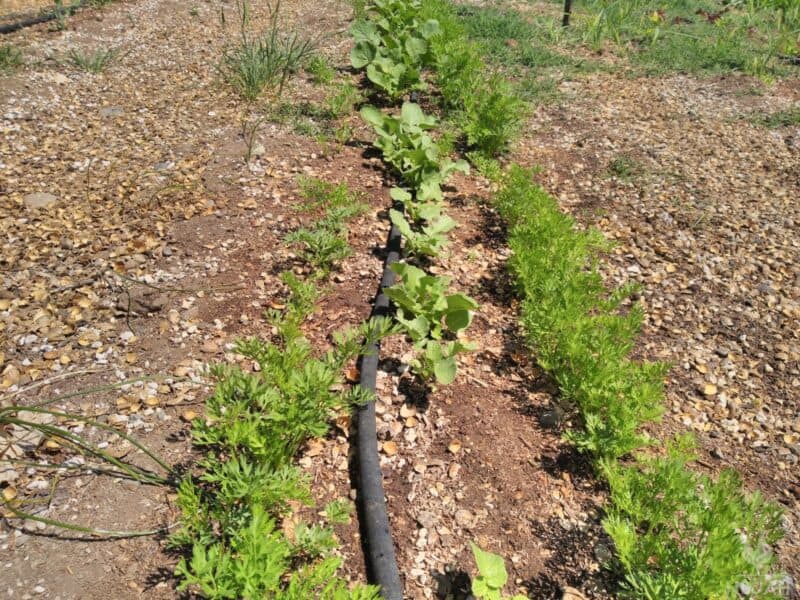
They take roughly 25-30 days, depending on the weather, after sprouting to reach maturity.
While leaving them in the ground for longer can alter their flavor and texture, they do better than many other varieties if left longer than they should.
At the time of harvest, the radish roots should be between 4-6 inches long and come intact with edible leaves that serve as fresh greens for many applications!
Steps For Growing White Icicle Radishes
To grow a good crop of White Icicle radishes, there are a few steps to adhere to:
- Prepare the garden bed accordingly
- Direct sow the seeds
- Water thoroughly through the growing season
- Providing nutrients (or lack thereof)
- Deal with pests and diseases
- Harvest when ready
Let’s take a look at each of these steps in-depth to ensure we get the most from our crop.
Preparing Your Planting Area
White Icicle radishes do best in well-worked soil that is free from compacted areas, rocks, clay, and thick weed roots. These radishes grow more like carrots, stretching further down than growing wide, so hard objects and compacted soil can reduce root growth.
I utilize a no-till garden design, so my planting areas are 4+ inches thick of high-quality garden soil that has never been stepped on (aside from a few missteps of course). This provides the perfect growing medium for White Icicle radishes.
You don’t have to use the no-till system for radishes, but ensuring that you work the planting area at least 6 inches deep is preferred for this radish variety.
Direct-Seeding The Seeds
While radishes can be transplanted, most gardeners agree that this fast-growing crop is impaired by the transplanting process. That makes direct sowing the seeds the best choice.
Plant each seed about an inch apart to a depth of ¼-½” deep. Once the plants have sprouted, you can thin them out to 2-3 inches apart to ensure there is enough room for the roots to grow.
If radishes are grown too close together and don’t have enough space to spread their root structure, they simply won’t produce roots and you’ll be left with a plant that provides only the tops as fresh greens.
Irrigating Your Crop
Radishes do best in moist soils as dry soils for long periods can increase the spicy taste that sometimes afflicts radishes.
The typical recommendation is 1” of water per week, but this is dependent on soil drainage, water retention, whether mulch is present, and ambient temperatures.
One of the best ways to ensure your radishes are receiving enough water is to stick your finger in the soil a bit away from the radish plants. If the soil is moist through the first 6 inches or so, then the irrigation is sufficient.
I choose to use soaker hoses in my garden to keep my plants dry while keeping my root zones at optimal moisture levels. Getting your plants wet by using overhead watering systems puts your garden on the fast track to diseases typically.
Nutrient Needs Of White Icicle Radishes
Many beginner gardeners are concerned about getting enough nitrogen to their crops to encourage foliage growth.
With radishes, you don’t want an abundance of nitrogen as it causes more leaf growth and less root growth. While this is fine if you are only interested in the radish tops, White Icicle radishes don’t produce huge tops in the first place.
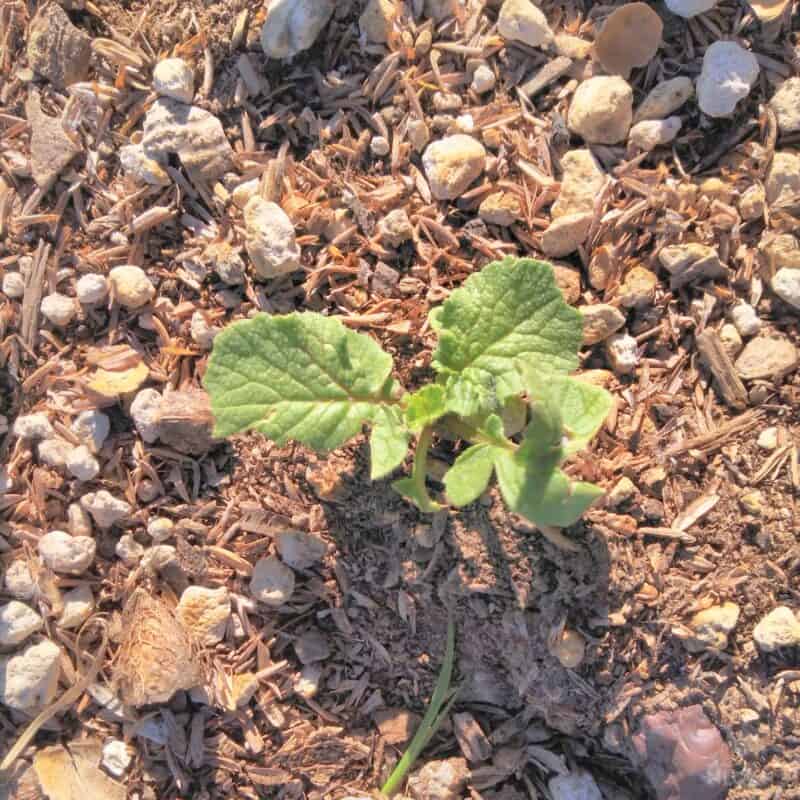
If you prepare your planting area with high-quality garden soil already, the short growing cycle of radishes should mean that the soil will provide all the necessary nutrients for radishes.
Any additional fertilizer needed during a cycle of radishes is probably a sure sign that your garden needs some help!
I didn’t use anything but the nutrients already present in the soil and water throughout my growing season with the White Icicle radishes. This should be your goal as well!
Common Pests and Diseases
Radishes are such a fast-growing crop that simple crop rotation typically takes care of any issue that would affect these plants. That includes the most common pests like flea beetles and aphids.
However, I quickly found that birds love pecking at my radish sprouts as they came out of the ground, which delayed growth in a good amount of my crop.
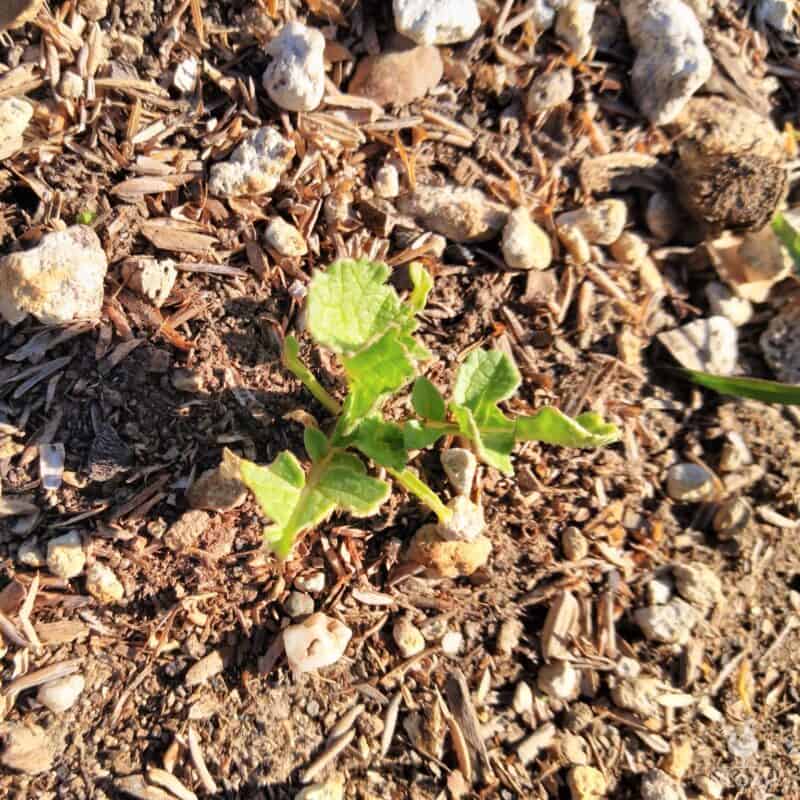
Birds won’t mess with established plants, like transplants, but we know that radishes don’t do well with transplanting.
This means we need an easy way to scare off the birds to allow the radishes to mature. There are a few options:
- Bird netting
- Motion-sensor sprayers
- Artificial bird calls looped on a timer
- Hanging shiny objects to flutter in the wind.
I had some old CDs lying around and a few broken T-posts. So, I figured I’d try to tie the CDs up to the T posts with some shiny ribbon. Lo and behold, it worked for just as many days as were needed for the radish plants to become established.
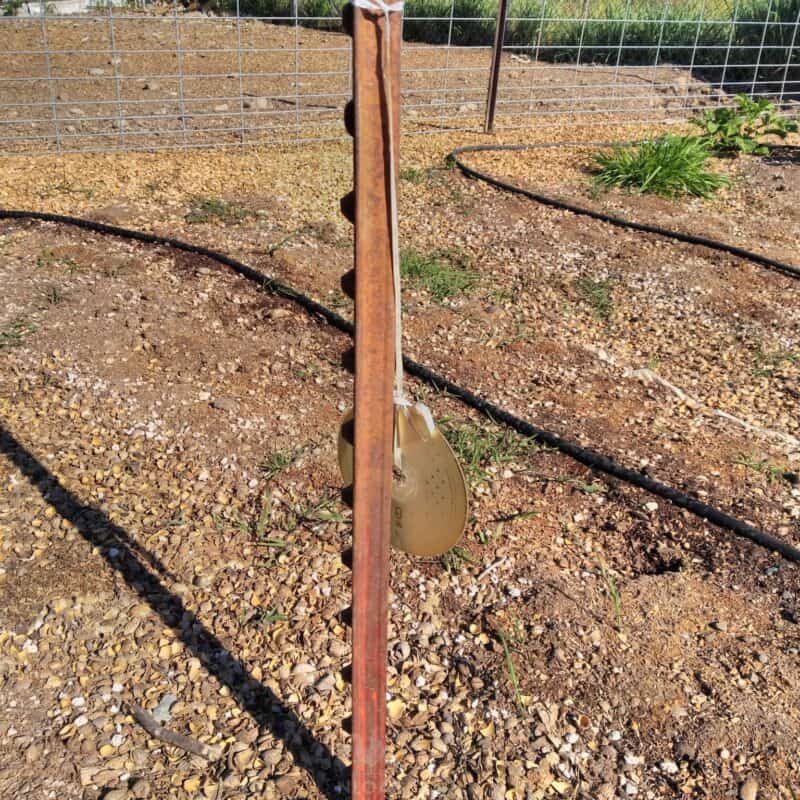
Another great option for dealing with radish pests? Companion planting. Growing radishes with companions like peppers, onions, mint, garlic, spinach, tomatoes, cucumbers, and lettuce can make a world of difference in keeping pests and diseases at bay.
Harvesting White Icicle Radishes
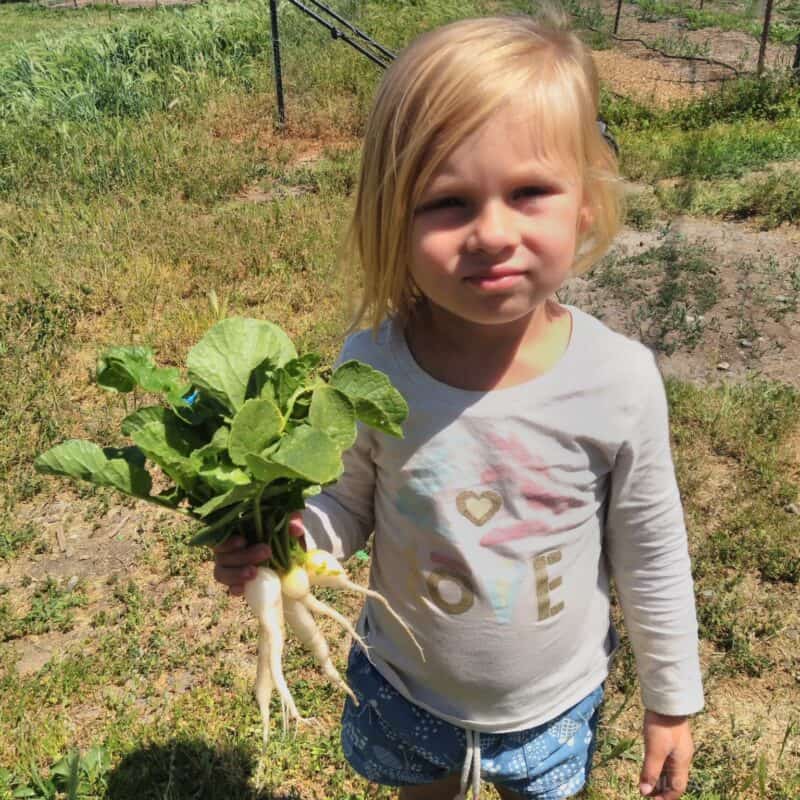
Once you start seeing the roots sticking out of the ground, you can begin harvesting your radishes.
While you may pick a few before their maximum length, harvesting them when the roots begin to show is an easy way to stagger your harvest and reduce the chance of radishes turning pithy or spicy from getting overripe.
Wash off the excess soil and you have an edible harvest from leaves to roots!
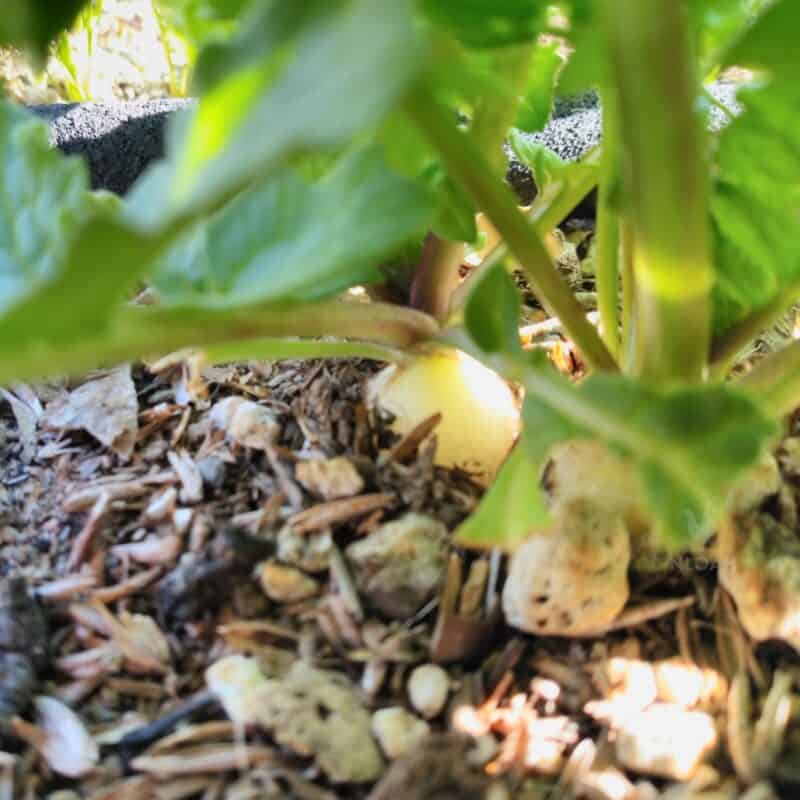
What Are Some Good Recipes for White Icicle Radishes?
Rich in magnesium and vitamin C, it’s easy to see why you might want to have a continual supply of white icicle radishes growing in your garden! But what exactly do you do with them after the harvest?
Radishes are great when eaten raw or cooked. White Icicle radishes do well with fermentation as well. The tops serve as fresh greens that can be thrown in a salad raw or cooked in stir-frys and soups.
If you grow too many, they are great treats for livestock as well. Chickens, pigs, and cattle would all love a tasty treat from the garden.
A fun idea is to plant a pig pen in radishes about 30 days before you put the pigs in it, giving the pigs plenty of food and encouragement to root!
As far as the kitchen goes, here are some ideas:
1. Braised Radishes
Braised radishes are known for their soft, buttery flavor. All you have to do is cook up the radishes with garlic, butter, and a few other simple ingredients. Serve the dish by itself or with other root vegetables, like a few slices of potato or even some carrots.
Here’s a recipe.
2. Roasted Radishes
Roasting icicle radishes is an easy way to enhance their flavor and texture. Cut your radishes in half, toss them in olive oil, sea salt, and black pepper, and roast in the oven until they’re golden and crispy.
It’s as simple as that! Here’s the recipe.
3. Buttered Radishes
Buttered radishes are a classic French-inspired recipe that never goes out of style. Here’s the recipe.
4. Icicle Radish Salad
Icicle radish salad is a refreshing and light dish that’s perfect for warm summer days. Cut your radishes into thin slices, and toss them with a few other key ingredients. Here is the basic recipe, but feel free to add other veggies (like peas or fresh cauliflower!) as well.
5. Radish Noodles
Looking for a unique low-carb and gluten-free alternative to pasta? Enter radish noodles! Using a spiralizer, create thin and long noodles with your icicle radishes, and then sauté the noodles in a pan with garlic, olive oil, and sea salt.
Here’s a video that will show you how to make them.
Should You Grow It?
There are plenty of difficult crops to try growing in your garden. Radishes of any variety don’t typically fit the bill.
White Icicle radishes are even easier because they can thrive in cool and warm weather, unlike many radishes that prefer cool seasons.
Growing bright white radishes can be a great way to get kids involved in the garden as well! Just check out how she loves harvesting this fast-growing crop!


Milo Martinovich was born and raised in a small town in Northern California. Throughout his life, he has been involved in agriculture and now lives on a 7-acre homestead raising livestock and growing food for his family. Self-sufficiency is his ultimate goal.

I grow icicle radishes as companion plants to all my squash! I let them go to seed. They protect my squash from squash bugs! 🙂